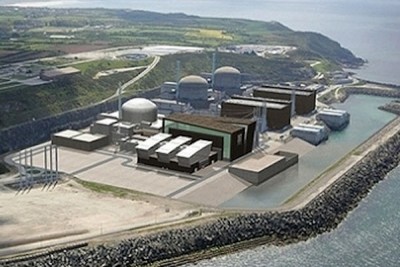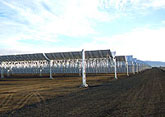A year ago the European Commission gave its approval to the British state aid for the construction of the controversial nuclear plant Hinkley Point C, a plant that will cost 24.5 million pounds (33 million euro). Now the SolarSuperState association supports Greenpeace and other nine organizations that denounced it before the European Court of Justice.
The future British nuclear power plant of Hinkley Point C has become a European issue. And all because the state aid it hoped to receive from the Government of the United Kingdom was brought before the European Commission and in October 2014 it was given approval. So it is no surprise that associations such as the Swiss SolarSuperState has announced it will support Greenpeace and nine other organizations that have positioned against the approval of the European Commission for the nuclear subsidy.
A Case for Justice
The SolarSuperState Association supports the appeal of Greenpeace Energy and 9 other organizations before the European Court of Justice that have requested that the decision of the European Commission to approve the feed-in tariff in the UK for nuclear electricity is annulled.
However, against are Hungary and Slovakia who are intervening against the action of Greenpeace Energy and support the European Commission in the defense of the bonus system for nuclear electricity.
In fact, investors say they plan to open the new Hinkley Point C nuclear power plant in 2023, a statement that contrasts to the publication of a report by SolarSuperState who believes that Britain, Hungary and Slovakia could already reach, 100% renewable electricity before 2023 if there is political will at the moment. In fact, in general the Association considers 100% renewable electricity is possible for all Member States in five years time.
SolarSuperState Association represents the people and organizations that want to benefit from the rapid increase in the development of decentralized renewable energy technologies. It monitors all the States of the European Union in the SolarSuperState classification.
The Hinkley Point C nuclear power plant
In 2008, the UK Government introduced the White Paper on Nuclear Energy where it announced it was planning to build new nuclear plants. To this end, it noted that this energy was «one of the cheapest for electricity generation using low carbon technologies.» They offered it quite well to the consumer with the added attraction that the price would be low, and a good investment for taxpayers, as subsidies would not be needed for its construction.
However, today it is known that the estimated cost of construction of the plant has increased more than 4 times in this period, when the UK Parliament voted for its construction, ie 16,000 million pounds (almost 19,000 million euro). The rise is due to the additional security measures imposed by the Government after studying the impact that the Fukushima disaster could have in the British nuclear program.
Ultimately, only 3,200 MW will cost the same as 50,000 MW in new combined cycles.
The voices that have been raised against have not helped. In 2013, the British government and the French utility EDF announced an agreement to build two nuclear reactors at Hinkley Point (Somerset), southwest England, capable of supplying electricity to five million households, but in recent months it has been known that the entry of two Chinese companies in the project has been required. It is China General Nuclear Power Group and China National Nuclear Power, that will retain between 30% and 35% of the company building and exploiting the reactors. The remaining shares will be in the hands of two French public groups, Areva (10%) and EDF.
Carlos Sánchez Criado
Publicista por la Universidad Complutense. Director comercial de publicaciones técnicas del sector de la energía durante doce años. Director de Energy News Events, S.L. desde 2012 difundiendo información en Energynews.es, movilidadelectrica.com e hidrogeno-verde.es. Y por supuesto, organizando eventos como VEM, la Feria del Vehículo Eléctrico de Madrid.



























